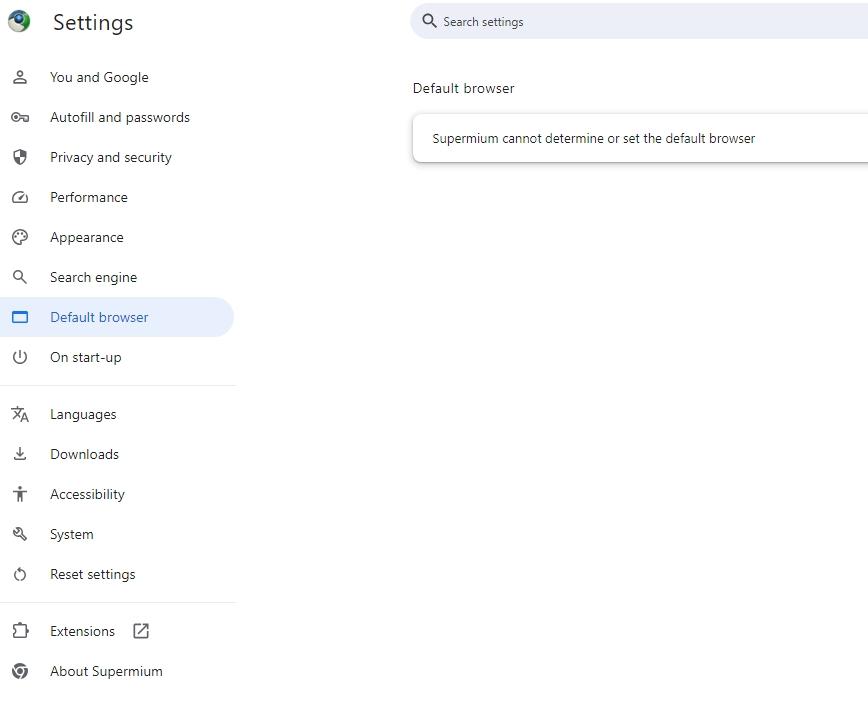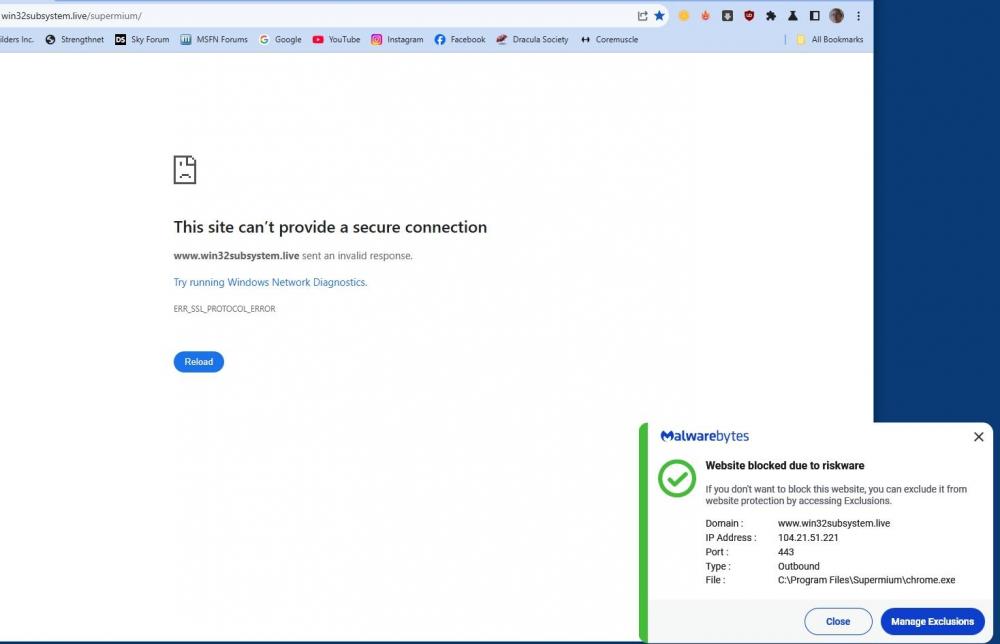Content Type
Profiles
Forums
Events
Everything posted by Dave-H
-
It was a silly thing to do in the first place. AFAIK it was because a few users reported that they were having problems with Twitch. These problems went away if the experimental features were enabled. What the developer should probably have done is simply to tell them to switch them on. What he actually did was change the default settings so they were on by default. This was fine until people found problems with other sites, like the British Gas one. Fortunately this has been corrected, but presumably the problems with Twitch are still there with the default settings now, and that does need to be addressed.
-
Why on earth would the Supermium developer release a version of the browser purporting to be based on Chromium 132, but actually based on an earlier version? That would make no sense at all if it can easily be checked, and he must be well aware that it can be. Surely it's much more likely that the core is indeed Chromium 132 but one or more of the tweaks which have been made to it, especially for compatibility with earlier operating systems, have resulted in the mutually exclusive issues with Twitch and the British Gas site, which now cannot both work properly at the same time.
-
I abandoned Thorium when it became very clear that there weren't going to be any more versions in the near future, if ever, which would run on XP. A version based on Chromium 122 doesn't really cut it any more. Why that decision seems to have been made I have no idea, but thank goodness that we still have Supermium!
-
@hidao OK, but here it is anyway if you want it. 360Loader.zip
-
360Loader.exe was included in the distributions of the 360Chrome browser here. If you have any of the associated zip files, it should be in there. If you haven't got it, I can give you a copy.
-
@hidao Assuming you actually have a copy of 360Loader.exe, can you try using that to launch Supermium with the INI file you had before? I would be interested to know if it does in fact work. Remember, you will have to change the name of the INI file to match the EXE file's name, e.g. 360Loader.exe will need an INI file called 360Loader.ini.
-
Just going back to Browsermetrics for a moment, someone here has reported the same issue with Edge, so it looks like it's something that can probably happen with all Chromium-based browsers. A new profile was recommended there too, and apparently fixed it.
-
Hmmm. Can I just check something? You're not trying to use 360Chrome.exe as the launcher, I hope! That's the executable for the 360Chrome browser. The exe file for the launcher is 360Loader.exe.
-
Oh dear. I'm sure that @NotHereToPlayGames will be able to say what's wrong. My chrome.exe is in the Program Files\Supermium folder, I don't have the App subfolder. That's just the way I set it up.
-
Yes thanks, I wasn't aware of that switch when I did it manually. If using the switch works on XP, as you say, I'm just a bit surprised that the normal option in the settings wouldn't work, or at least could have been made to work.
-
No I'm not. I spent a very long time manually editing the registry to make Supermium my default browser on XP, as the usual mechanism doesn't work on XP. I don't want the registry to be possibly messed up again.
-
It should be - AppName=Chrome PathToExe=.\App\$AppName$.exe I think that's right. I'm sure that @NotHereToPlayGames will confirm or otherwise! It can't find chrome.exe at the moment.
-
That's exactly what I did! I had equivalents for Thorium as well, but I've now removed that.
-
It really does work, I can assure you! Just put the loader exe file in the same folder as chrome.exe, along with its associated INI file where the settings are stored. This is mine for reference. [Setup] AppName=Chrome [FileToRun] PathToExe=.\$AppName$.exe Parameters=--user-data-dir="D:\Program Files\Supermium\User Data" --no-proxy-server /high-dpi-support=1 /force-device-scale-factor=1 --use-angle=d3d9 --ignore-gpu-blocklist [Environment] Profile=.\User Data
-
The 360Chrome loader works fine with Supermium, I use it on XP. I use Chrome+ on Windows 10.
-
Ah, so they pile up if you've disabled the feedback telemetry that uses the files? That would make sense, but I'm surprised that @NotHereToPlayGames wouldn't have done that!
-
Strange, my Supermium 126 BrowserMetrics folders, on 32 bit (XP) and 64 bit (10) only contain one file. That file is replaced every time I run the browser, but there's only ever one of them.
-
-
The suspension is now rescinded, apparently. The site is still not back working yet though, at least not here in the UK.
-
Supermium 132.0.6834.191 R1 now released. "(#1229) Resolving status of experimental web features. They are now defaulting to off, and the wording has been reverted as well. This fixes issues with the British Gas website."
-
Yes, I'm well aware of that project, I use it with Supermium on Windows 10! It's a great thing, but as you rightly say, it does not work with Windows XP.
-
The Portable Registrator program should make it the default browser, or at least register it with Windows so you can do it manually. I would try that rather than just using the switch. If it were that easy to make it the default browser on XP just by using the switch, there would be no problem, and the developer would have probably built that option in. Making a browser the default I think uses a very different mechanism on XP than it does on later versions of Windows.
-
No, but you can do that with a switch. I use a launcher to run Supermium on XP, and its INI file contains the necessary switch. --user-data-dir="D:\Program Files\Supermium\User Data" You can also, of course, just add it to the shortcut you use to run the program. The disadvantage of that, I found, is that you need to add it to all the places in the registry that the program is run from too. I found the launcher solution much easier, as you just run the launcher from the registry and from the shortcut, and the switches are then automatically applied. If you need to change them, you can just change them in the launcher's INI file, and job done!
-
I've used this program with great success to register programs with the system. It works fine on XP.
-

My Browser Builds (Part 5)
Dave-H replied to roytam1's topic in Browsers working on Older NT-Family OSes
Back on topic please.



